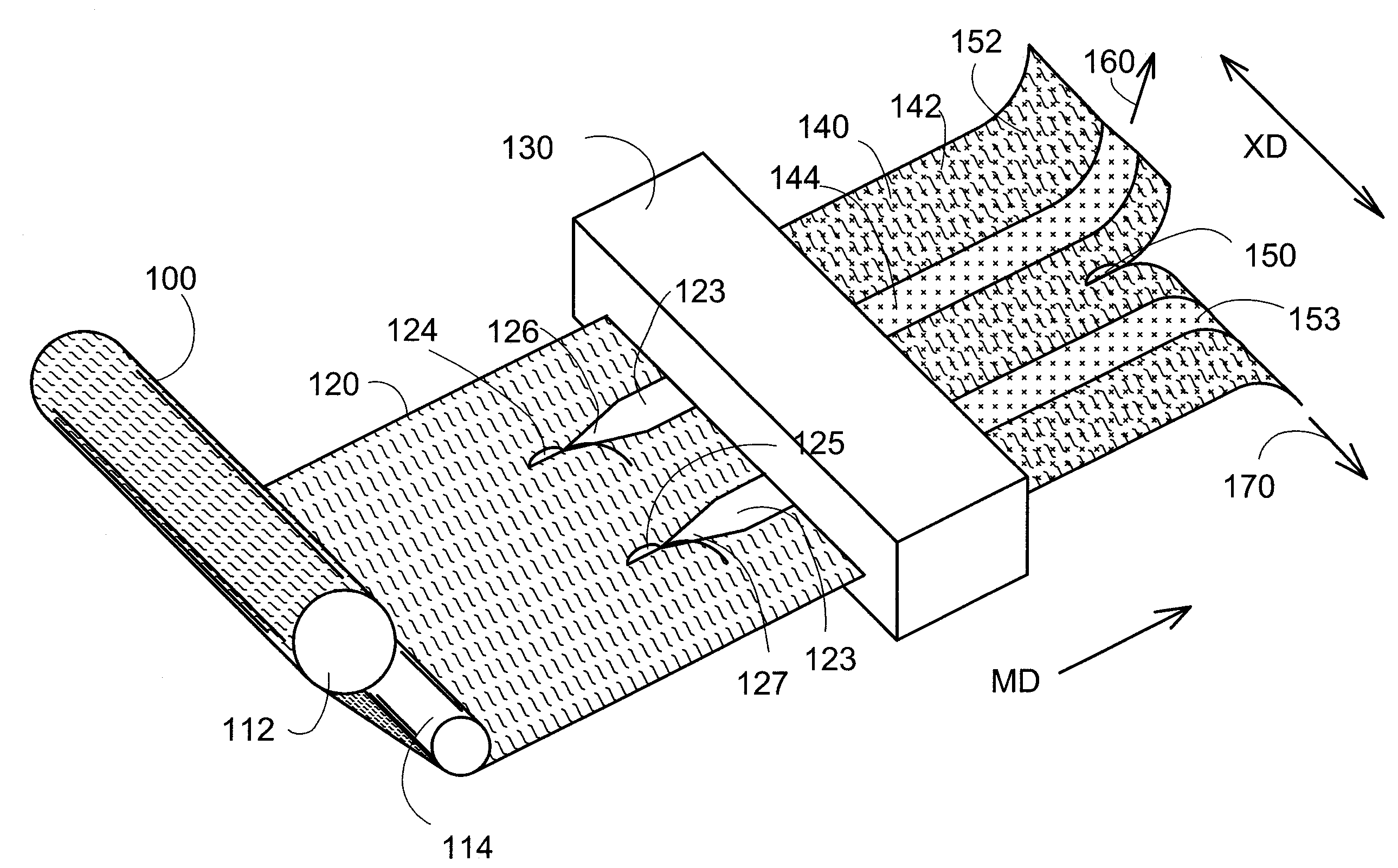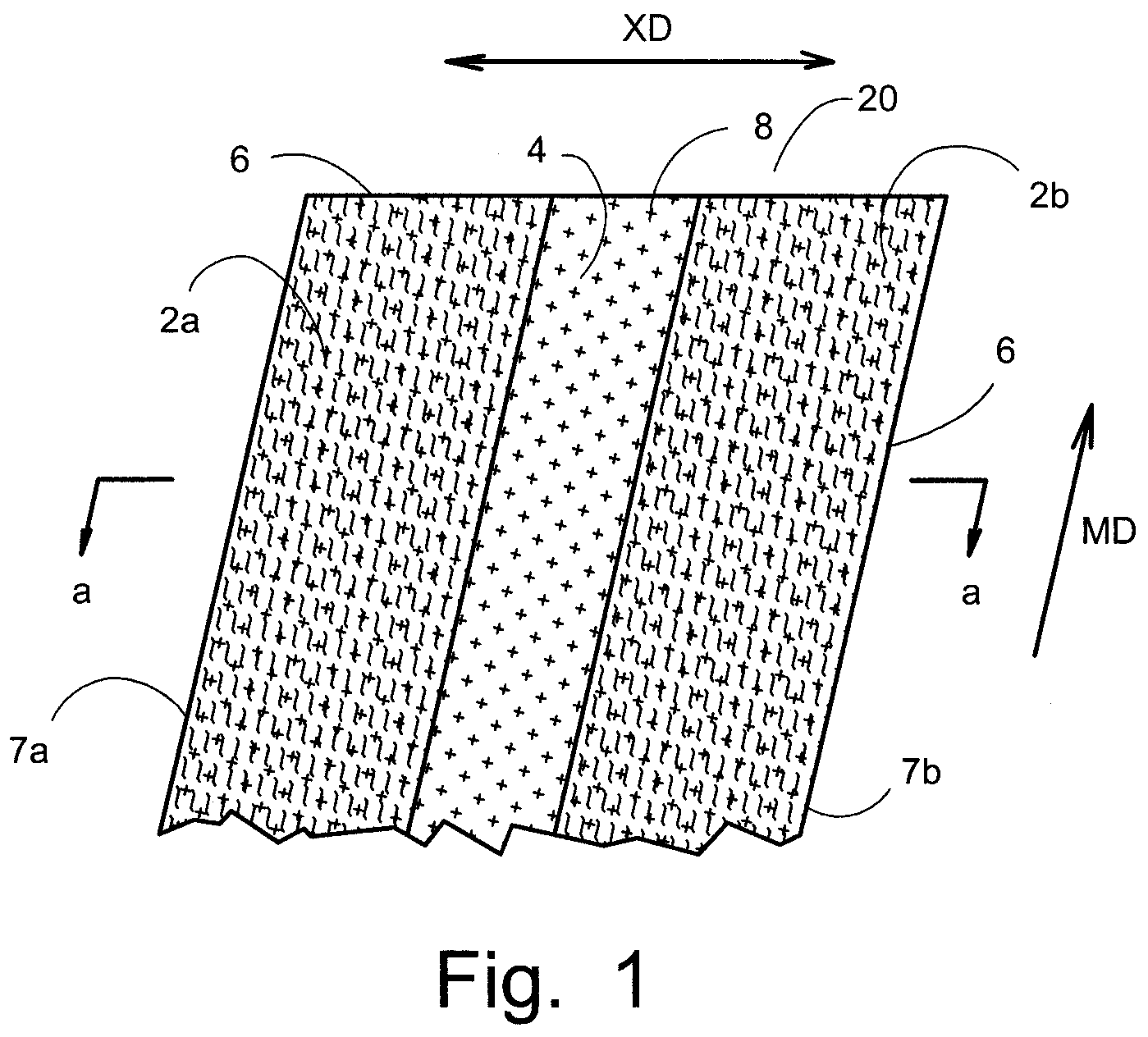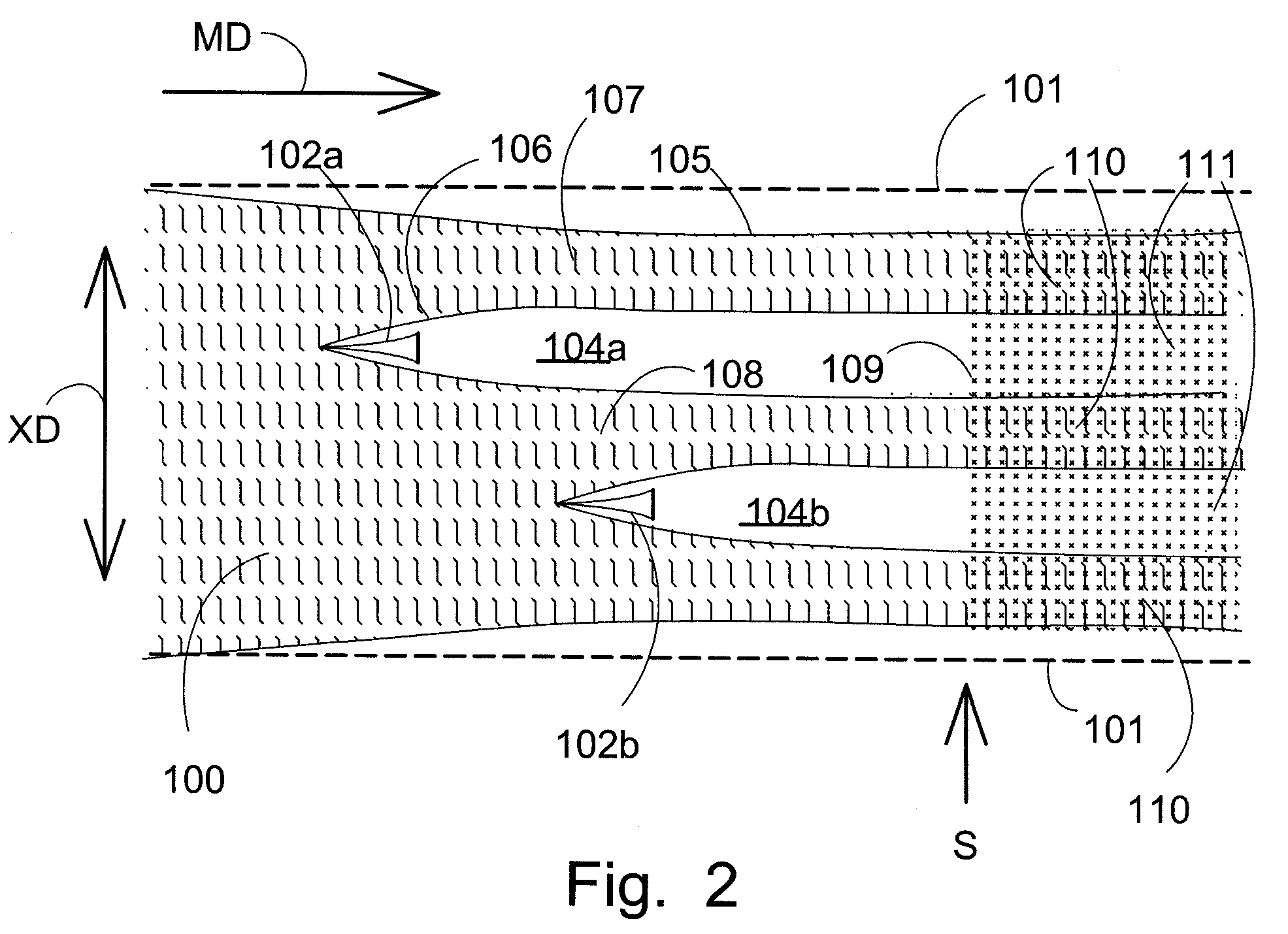Stitchbonded fabric with a discontinuous substrate
a discontinuous substrate and stitching technology, applied in the field of fabric, can solve the problems of reducing the aesthetic appeal of products, reducing the stretch capacity of gathered fabrics, and affecting the quality of finished products,
- Summary
- Abstract
- Description
- Claims
- Application Information
AI Technical Summary
Benefits of technology
Problems solved by technology
Method used
Image
Examples
Embodiment Construction
[0023]Traditionally, the term “stitchbonded” refers to the result of a multi-needle stitching operation performed on a base layer of a web of substrate material.
[0024]The meaning of the term “fiber” includes staple fiber (i.e., finite length filament) and continuous filament. The term “textile decitex” means fibers in the range of 1 to about 22 dtex. The fibers may be naturally occurring fibers or fibers made of synthetic organic polymers.
[0025]To prepare stitchbonded fabrics in accordance with the present invention, conventional multi-needle stitching equipment, having one or more needle bars, can be employed. In the stitching step, spaced apart, preferably parallel rows of stitches are formed in the base layer, the rows extending along the length of the fabric which usually corresponds to the so-called “machine direction” or “MD”, i.e., direction of travel of the fabric through the stitching machinery. The width of the fabric usually corresponds to the direction across the machine...
PUM
 Login to View More
Login to View More Abstract
Description
Claims
Application Information
 Login to View More
Login to View More - R&D
- Intellectual Property
- Life Sciences
- Materials
- Tech Scout
- Unparalleled Data Quality
- Higher Quality Content
- 60% Fewer Hallucinations
Browse by: Latest US Patents, China's latest patents, Technical Efficacy Thesaurus, Application Domain, Technology Topic, Popular Technical Reports.
© 2025 PatSnap. All rights reserved.Legal|Privacy policy|Modern Slavery Act Transparency Statement|Sitemap|About US| Contact US: help@patsnap.com



